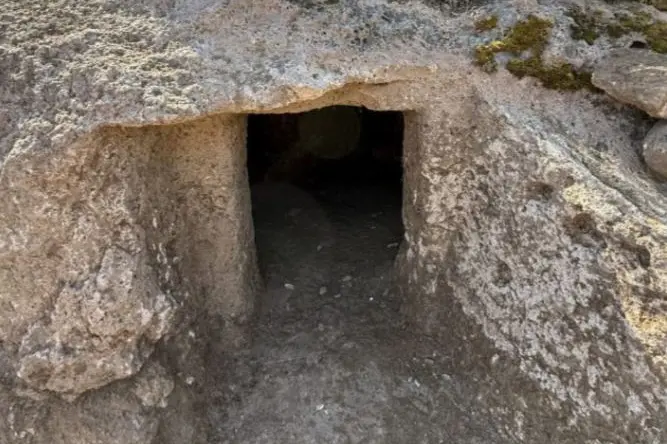Three new Domus de Janas discovered in Bonorva
The number of underground tombs brought to light at the archaeological site of Sant'Andrea Priu is increasing.Per restare aggiornato entra nel nostro canale Whatsapp
Three new Domus de Janas have come to light at the site of Sant'Andrea Priu, the archaeological area of Bonorva : a discovery that is part of the activities linked to the Ministry of Culture's project for the excavation, restoration and enhancement of the Meilogu territory.
The discovery of the tombs brings the number of known hypogea to 20. Numerous significant finds have been made within them, and are currently being analyzed.
This new discovery enriches our knowledge of the domus de janas, tombs dug into the rock that often feature carved details of the homes of the living and symbolic decorations linked to magical-religious rituals , and adds to the serial site of the domus de janas which recently obtained UNESCO recognition as a World Heritage Site.
Bonorva also boasts two of the seventeen necropolises inscribed on the prestigious list: Sant'Andrea Priu and Sa Pala Larga . The excavation took place in the plateau area, near the worked rock known as "Campanile" or "Toro," whose shape dominates the surrounding valley.
The characteristics of the terrain between Tomb XII and Tomb XIII (known as the "Tomb of the Hearth") suggested the presence of a new tomb yet to be explored. The excavations have indeed uncovered three new domus de janas (the XVIII, XIX, and XX), arranged in a fan shape starting from the Tomb of the Hearth.
This morning, the project was presented in the presence of Massimo D'Agostino, mayor of Bonorva; Elena Anna Boldetti, regional secretary of the Ministry of Culture for Sardinia; Isabella Fera, Superintendent of Archaeology, Fine Arts, and Landscape of Nuoro and Sassari; Patrizia Luciana Tomassetti, project manager - Regional Secretariat of the Ministry of Culture for Sardinia; Nadia Canu, archaeologist - Superintendence of Nuoro and Sassari; Pinna Corraine, archaeologist - Superintendence of Nuoro and Sassari; and Sofia Bertolini, restoration officer at the same superintendence.
Tomb XVIII, the first to be identified, is characterized by a dromos (corridor) cut very cleanly into the rock, which yielded interesting materials such as pickaxes, a small greenstone axe, a spindle whorl, and obsidian fragments. It features a quadrangular chamber, with a centrally located hearth carved in relief and a central cavity, leading to the main rectangular chamber. A third, smaller chamber opens onto the left side. Tomb XIX, significantly smaller than the others, features a small pavilion on the outside and a rectangular chamber on the inside, from which a second, rounded chamber opens, almost like a niche. Fragments of obsidian and ceramics, particularly a miniature vase, were found in this tomb.
Finally, the most complex Tomb XX features an entrance chamber from which two lateral branches branch off, for a total of seven chambers. One of them features a painted band. It has been called the "Tomb of the Roman Vases" due to its rich imperial-era funerary objects, including over 30 ceramic artefacts in excellent condition .
The finds will be restored at the Restoration and Conservation Centre of the Superintendency in Li Punti.
Archaeological research will also continue in the lower part of the site, where a Roman and early medieval settlement once stood. The new tombs will be immediately accessible to visitors.
This project is part of a larger excavation, restoration, and enhancement project of the archaeological complex of Sant'Andrea Priu, Nuraghe Oes, and Nuraghe Santu Antine, funded with approximately €2 million by the Ministry of Culture.
The project is managed by the Regional Secretariat of the Ministry of Culture for Sardinia, in collaboration with the Superintendency of Archaeology, Fine Arts and Landscape for the provinces of Sassari and Nuoro.
